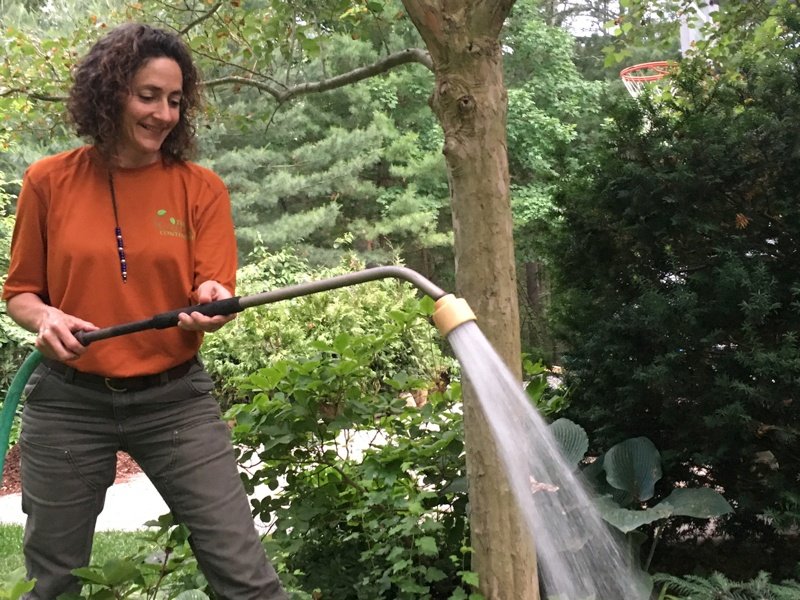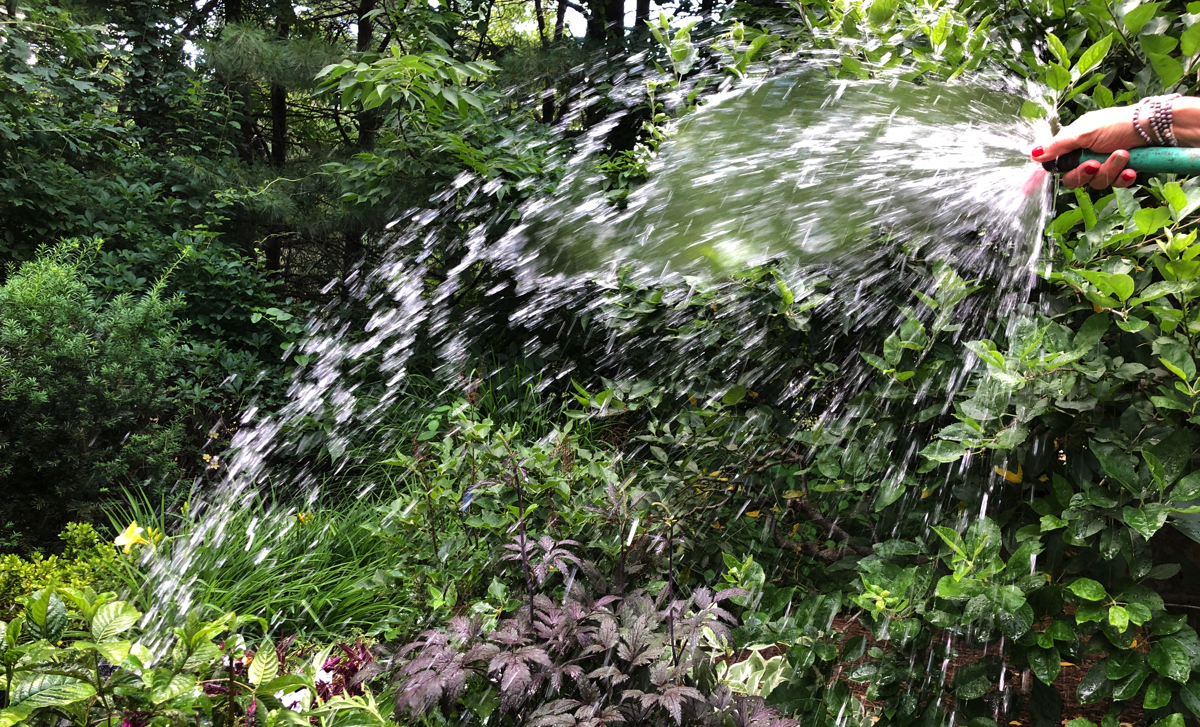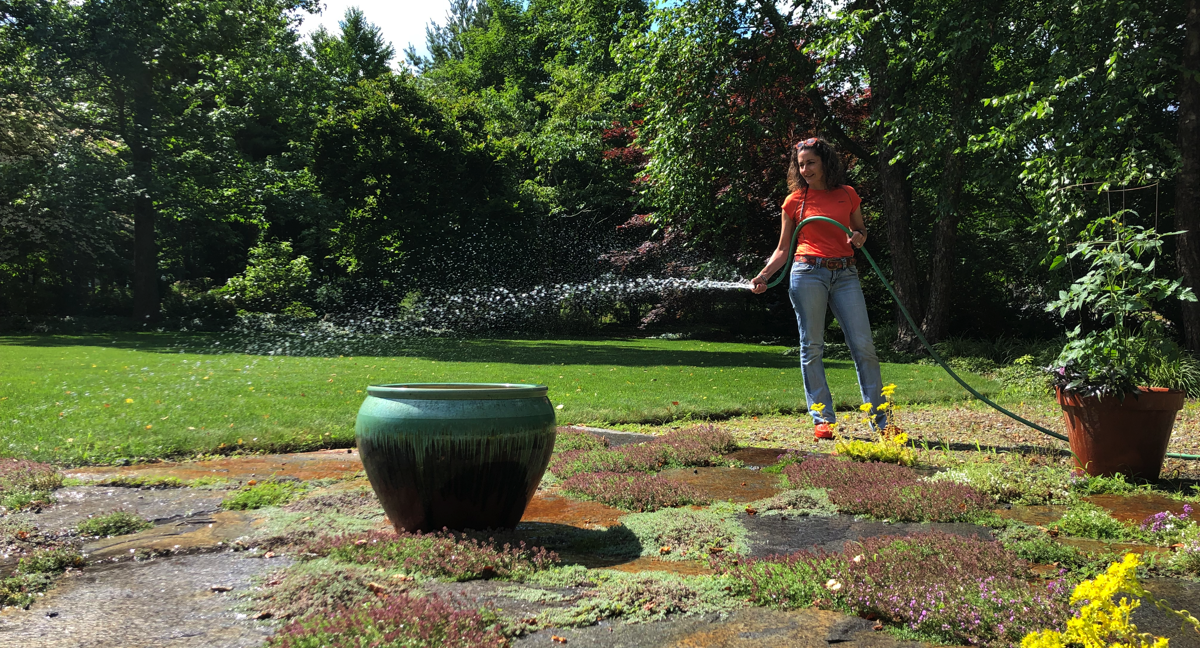
It is almost impossible to overestimate the importance of water for your garden – after all, water makes up 85 to 95 percent of the weight of living plants. In fact, plants use more water than anything else. Water carries nutrients from the soil to the plant cells, so plants that are kept at their desired hydration level will be stronger and healthier.
It’s important to state that there is no way to teach anyone exactly how to water every garden, every plant, in every climate or region in one blog post. Instead, we can talk about rules of thumb and suggest tools that will help you understand what to look for when determining watering needs.
There’s a fine balance between too much and too little water. Too much water can result in soggy roots and plants may become oxygen starved. Clearly, for bog or aquatic plants, this isn’t an issue. But for our perennial and shrub borders, this can be deadly. Too little water and plants can just stop growing, wilt, and eventually die. For plants that have developed to live in more hot/dry/arid conditions, there is clearly a higher tolerance for dry conditions. Knowing your climate and your specific growing conditions - including soil type - must always be the starting point in making watering decisions.

A gentle drink from a garden hose.
A good rule of thumb is that ornamental gardens require about one inch of water per week. This assumes a healthy soil structure that can hold that water for the plants to be able to absorb it. Gardens located in hot, dry climates lose moisture at a more rapid rate and may require up to two inches of water per week, while gardens in cooler climates may require no watering at all or minimal watering.
For most healthy garden soils, one good soaking is better than several shallow waterings. This helps to encourage roots to grow nice and deep rather than staying close to the surface awaiting their next quick sip of water. Water that goes deep can endure longer than the water on the surface which dries up under the hot sun and atmospheric heat.
Now that you know why water is so important to your plants, it’s important to know how to help them get the right amount of water throughout the growing season - including the fall, when most plants are actively growing their root systems long after they’ve stopped putting energy into their flowers, branches, and buds.

Once weekly deep drink of water for the Thyme planted between Goshen Stones
Here are some basic tips for general outdoor watering, courtesy of the University of Massachusetts Extension’s Landscape, Nursery and Urban Forestry Program:
In our ongoing discussion of Fine Gardening, it’s vital that the role of water be understood and reinforced by informed action. Water is absolutely essential to the fine balance of elements in our managed landscapes. Too much or too little of anything, including water, can upset that balance and jeopardize the health and beauty of the landscape and the growing things in it.
Yellowing leaves and wilt can be a sign of both too little and of too much water, so look deeper. Is there a crispy dry look to the plant, or a soggy, rotting aspect? Touch the soil on top and then dig in a little. If the top is crusty, dusty or cracked, you are likely in a low water condition. If it’s smooth, damp or slick, you could be in an over watering condition. The time you take to inspect the plant and the soil will be a great help in determining what the plant needs.

While it would be easy to simply type - “Water this much, this often, and you're done.” - that can’t be done. The best way to know what your landscape needs is to visit your plants. Walk around and see how things look. The walk and time in nature are good for you, the attention is good for your plants. In time, your plants will become familiar to you and you’ll know what they need and when they need it. Sounds corny...but it’s true.
Water is central to all life, so make sure that good watering practices are front-and-center in your Fine Gardening strategy. With just a little knowledge, discipline, and awareness, you can create a custom watering strategy to precisely fit your landscape needs, helping ensure a happy and healthy growing environment all season long while protecting and conserving this finite resource on our planet.
Learn more about Fine Gardening by downloading the eBook titled "The Fine Gardeners Guide to a Beautiful and Luxurious Landscape" today.
The Garden Continuum®
67 West Street, Suite 101
Medfield, MA 02052
Call us: +1 (508) 359-8200
Leave a comment